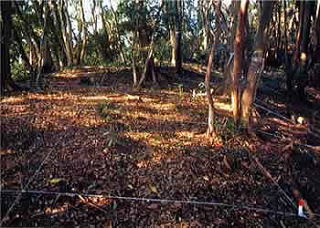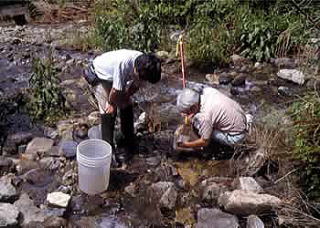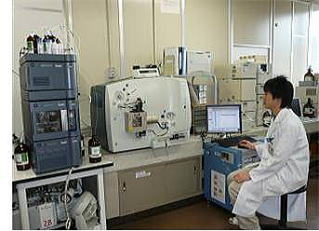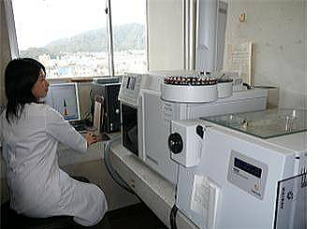

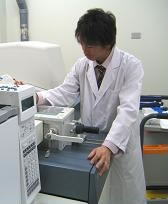
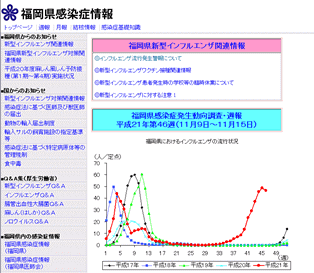
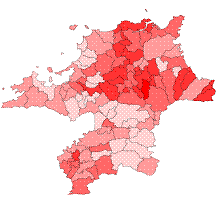
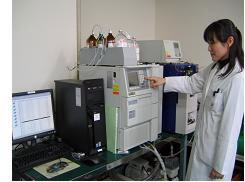

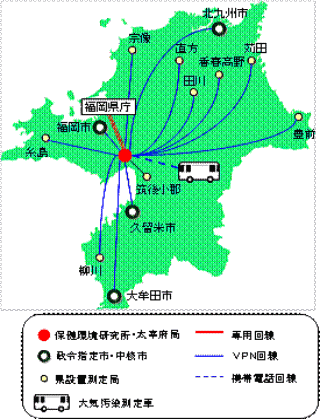
| |
| Automatic monitors installed at 10 important sites in
the prefecture and a mobile monitor car are connected to the Central Monitor
Station in the institute by the telephone network, and the real time states of
weather and air pollution are monitored continuously. It is also connected to
the Surveillance Centers in the cities of Kitakyushu, Fukuoka, Kurume and Ohmuta
to monitor the states of weather and air pollution. The surveillance information
is available on the "Atmospheric Environmental Regional Observation System"
(nickname: Soramame-kun) of the Ministry of Environment on the Internet (http://soramame.taiki.go.jp/). Furthermore, information about
the current of level photochemical oxidant density in the prefecture, "Fukuoka
photochemical oxidant news flash" is shown (http://www.fihes.pref.fukuoka.jp/taiki/). |
| Chemicals such as dioxins released into the environment affect human health and the ecosystem. Therefore, the prevention of environmental pollution by chemicals is an important issue. This division conducts research on monitoring harmful chemicals in the atmosphere, water and soil etc., such as dioxins, polychlorinated biphenyl and endocrine disruptors, at various sites in the prefecture using high-performance analytical instruments. These basic data are effectively used for taking measures against environmental pollution. |
| This division performs bacteriological examinations on specimens obtained from patients with food poisoning and infectious diseases to detect and identify pathogenic microorganisms, enterohemorrhagic Escherichia coil O157 and Salmonella being the most frequent subjects. Bacteriological examinations are also being done on foods such as fish, meat and vegetables, drinking water to ensure their microbiological safety. The research activity of the division includes an improvement and/or a new development of methods for bacteriological examination, and gene analyses of pathogenic bacteria and protozoa to locate the source of food poisonings and infections, and to take measures to prevent their spreading. |
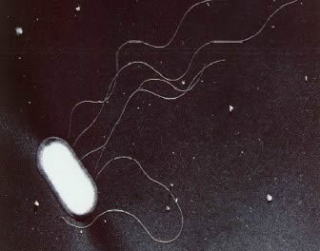
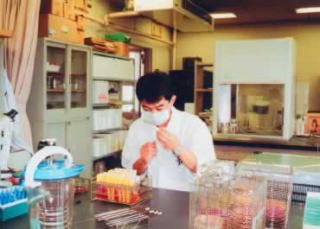
| This division performs tests and research necessary for the prevention of infectious diseases caused by viruses and rickettsias. For example, it detects and identifies pathogenic agents that cause influenza, AIDS, measles, rubella, and tsutsugamushi disease, and studies their biological properties to clarify their role in the occurrence of infectious diseases. It also explores the causes of viral food poisoning. |
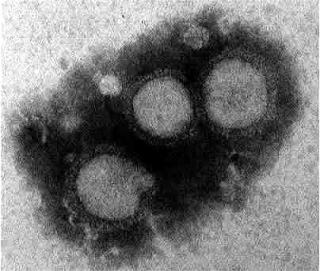
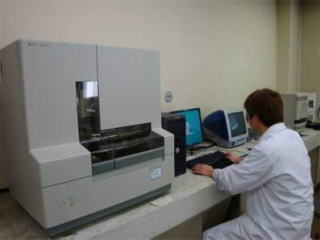
| This division examines the suitability of foods, their containers and packaging, drugs and household utensils to their specifications and standards to ensure healthy and safe living. It also studies chemical causes of food poisoning and complaints about foods. In addition, it develops rapid analytical method and investigates toxic and/or persistent environmental pollutants such as polychlorinated dibenzo-p-dioxin/furans, polychlorinated biphenyl, polybrominated dibenzo-p-dioxin/furans, brominated flame retardants such as polybrominated diphenyl ethers, and heavy metals in foods, and biological samples including human blood and breast milk. The research activities of the division include studies related to Yusho diagnosis.This division performs tests and research necessary for the prevention of infectious diseases caused by viruses and rickettsias. For example, it detects and identifies pathogenic agents that cause influenza, AIDS, measles, rubella, and tsutsugamushi disease, and studies their biological properties to clarify their role in the occurrence of infectious diseases. It also explores the causes of viral food poisoning. |
| |
| These are laboratories with reduced interior atmospheric pressure to prevent the discharge of highly-toxic chemicals such as dioxins and highly pathogenic microorganisms. Contamination of the environment by hazardous chemicals and pathogenic microorganisms can be avoided by performing experiments in such laboratories. |
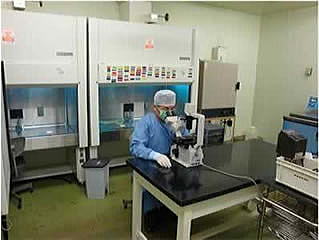
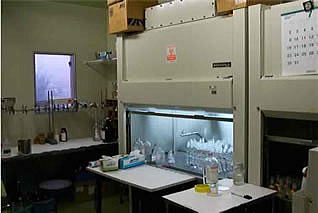
| This division performs analyses of air pollutants emitted from industrial plants, automobiles and other sources in order to promote conservation of a clean atmospheric environment. It also performs measurement on environmental radioactivity. In addition, it conducts research on transboundary pollution (yellow sand, photochemical ozone, acid deposition and so on) and various hazardous substances, and studies on removing NOx in the air by activated carbon fiber (ACF) |
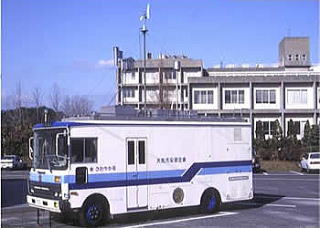
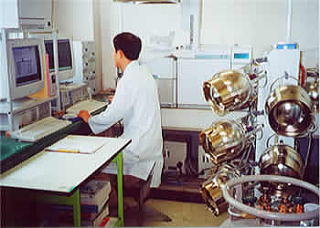
| This division performs analyses of water pollutants, such as heavy metals and organic compounds for preservation of clean environmental water. It also performs physical and chemical quality tests of tap water, well water, and hot springs. In addition, it carries out field investigations of water contamination as well as research in to methods of preventing water pollution. Moreover, it conducts research on contamination of underground water and soil. |
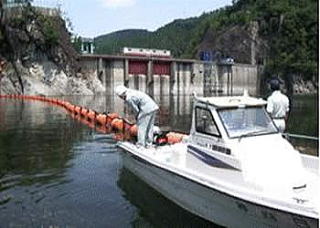
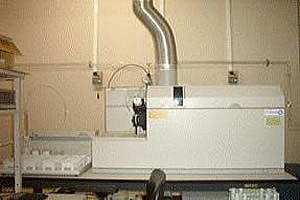
| This division performs investigation and research into hazardous materials in landfills to confirm that wastes are being properly disposed of and that the safety of local environment is protected. It also investigates recycling technology and confirms the safety of recycled goods. |
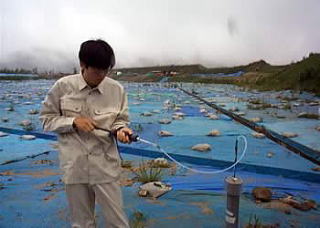
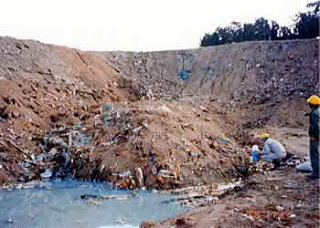
| This division includes general clerical work and accounting, management of welfare programs for the staff, and maintenance of the buildings. |
| This section coordinates research activities and handles liaison with administrative sections for smooth execution of research and investigation activities. It issues publications such as annual reports and the Hokanken News as its public relations and training support services and arranges tours and seminars. In addition, it administers the self-declared Environmental Management System in conformity with ISO 14001, as its secretariat, for preservation of the environment and prevention of its contamination and for the establishment of a resource-recycling society. This section analyzes data concerning public health and environmental sciences to protect and promote the health of the prefectural population. Vital statistics are maintained and epidemiological investigate the incidence of infectious diseases and results of medical examinations on patients with food poisoning (Yusho) caused by contamination of PCBs in rice oil. This division also constantly monitors the state of air pollution in the prefecture using a standard surveillance system for SO2, NO, NO2, CO and photochemical oxidant. Moreover, it widely distributes information on the activities of the institute through its homepage on the Internet. |
| This division investigates the ecology of animals and plants in wet lands and forests, and the effects of environmental chemicals on organisms, to search the best way to conserve and restore healthy habitats fit for wild life. It also identifies insect pests that affect the hygiene of human living environments, and prepares guidebooks that describe easy evaluation methods of river water quality using aquatic macro invertebrates. |
